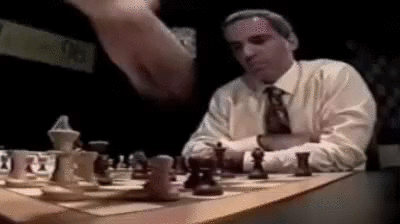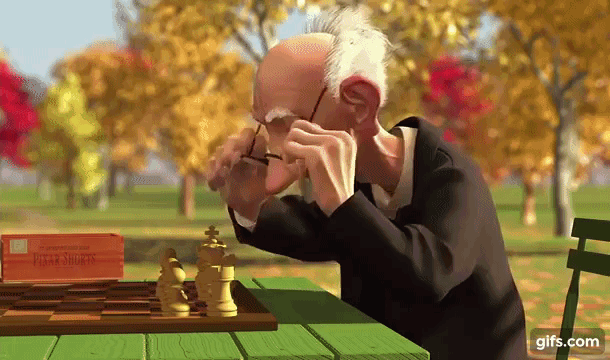Do you know how the inventor of chess was rewarded? This story about chess and rice could help you retire early.
It’s an old Asian proverb—some say Indian, others say Chinese. The Emperor was enthralled with the new tactical board game brought before him. Simple to learn, impossible to solve. Killing the king—ok, that part made him nervous. But otherwise, a great game.
He was so happy that he offered the inventor of chess a reward of his choosing.
The inventor responded:
I am but a simple game-maker. Chess and rice are all I require to get me through the day.
Would you give me one grain of rice for this first square on the chessboard?
Double that for the second square—two grains? Double again for the third square—four grains?
Continue on for the rest of the board, doubling for each square—could that be my reward?
That rice is the only reward I would need.
(FYI—some versions of the story use grains of wheat rather than rice. Just depends on how you like your carbs)
The Emperor felt himself a thoughtful judge and decent mathematician. A single meal might have thousands of grains of rice in it. Even if the inventor’s request summed to a million grains of rice, that’s only a few years’ worth of meals. The empire could easily absorb that loss and afford to give the requested reward.
“I agree,” proclaimed the emperor, sealing his fate.

The Emperor’s Mistake
The Emperor was not good at mental math.
I encourage you to break ranks from the Emperor. Bust out a spreadsheet and calculate this rice reward for yourself. I’ll give you some highlights.
After two full rows of the board are filled—it’s an 8 x 8 board, FYI—the inventor of chess would have ~65,000 grains of rice, or about three pounds.
How long would that last? Maybe a week? We’re a quarter of the way through the board, and the inventor of chess has one week of food. What kind of reward is this?
Now pause, because we’re at the turning point. How much rice will there be after one additional row is filled? This is important. Take three pounds, then double it eight times.
The answer: about 750 pounds, or enough rice for a couple years.
After two rows, we had enough rice for a week. But after the third row, we have enough rice for a couple years. The Emperor’s throne is starting to feel uncomfortable.
What happens when we fill one more row, making four full rows? Almost 200,000 pounds of rice. It would take the inventor a thousand years to eat that much rice on his own. And we’re only half-way through the board!
After the 5th row, the rice equals half the weight of the Titanic.
After the 6th row, the rice weighs more than all the passenger cars on Earth. It’s difficult to fathom. What does a billion cars look like?
After the 7th row, the rice is equivalent to ten times the weight of all the stuff on Manhattan island—including every building.
After the 8th row, the rice weighs about the same as Lake Erie. That’s 115 cubic miles of water.

Enjoying this article? Subscribe below to get new articles emailed straight to your inbox
What chess and rice can teach you
This might be the world’s first legend involving compound interest. It’s exactly why your younger years are the best time to invest. Starting early allows you to fill up more of your personal chess board.
The early days of investing feel like a slog. Every paycheck contributes a little bit. But by the end of the year, it feels like you’ve put in $5000 and your investment gave you $100 back. “Free money” is nice, but you can’t retire off such a small return.
But remember—you’re in the first rows of your chessboard. And without those first rows, the last rows wouldn’t be impactful.
The calculation for each square depended on the rice in the previous square. Each year of your investing timeline will depend on what you’ve done the previous year.
But my investments won’t double each year!
Now, your investments are not going to double in value every year. If they do, immediately send an email to [email protected].
But they might double in value every 10 years. That’s a reasonable—some would say conservative—benchmark. And let’s consider a simple worker who puts 10% of their paycheck (let’s say $5000 annually) in a index fund through their 401(k).
More reading about index funds:
After five years, our investor might question their strategy. They’ve consistently invested $5000 each year, but their portfolio only returns $2000 of growth during Year 5.
Investing should make your money work for you. Yet our investor feels like they’re doing most of the work.
But remember: these are the early rows of the chessboard! And just like we witness around row #3 of the chessboard, we’re about to hit a turning point.

At our investor’s ten-year mark, their portfolio grows by $4800 on its own, essentially matching the $5000 that the investor contributes. Not a bad deal.
By year 16, the portfolio grows $9600 per year, doubling the $5000 annual contribution. By year 24, the portfolio grows more than $20000 per year, a 4x multiplier on the annual contribution. The portfolio is now “working harder” than the investor—much harder, in fact.
If our investor started at age 22 and retired at 59—the age when 401(k) withdrawals can begin—they’d have 37 years to invest. And after those 37 years, their portfolio would be returning $56000 per year. That’s more than their entire salary!
Chess and Rice and Investing
Will your retirement nest egg outweigh Lake Erie? I have my doubts.
But you can use the parable of chess and rice to better understand your investing future. Build an investment foundation, let your nest egg grow, and you’ll soon find yourself in a winning position.

Thank you for reading! If you enjoyed this article, join 8000+ subscribers who read my 2-minute weekly email, where I send you links to the smartest financial content I find online every week.
-Jesse
Want to learn more about The Best Interest’s back story? Read here.
Looking for a great personal finance book, podcast, or other recommendation? Check out my favorites.
Was this post worth sharing? Click the buttons below to share!
Loving the metaphors and puns! Really solid advice that is good to always remember. Keep up the good work, mate.